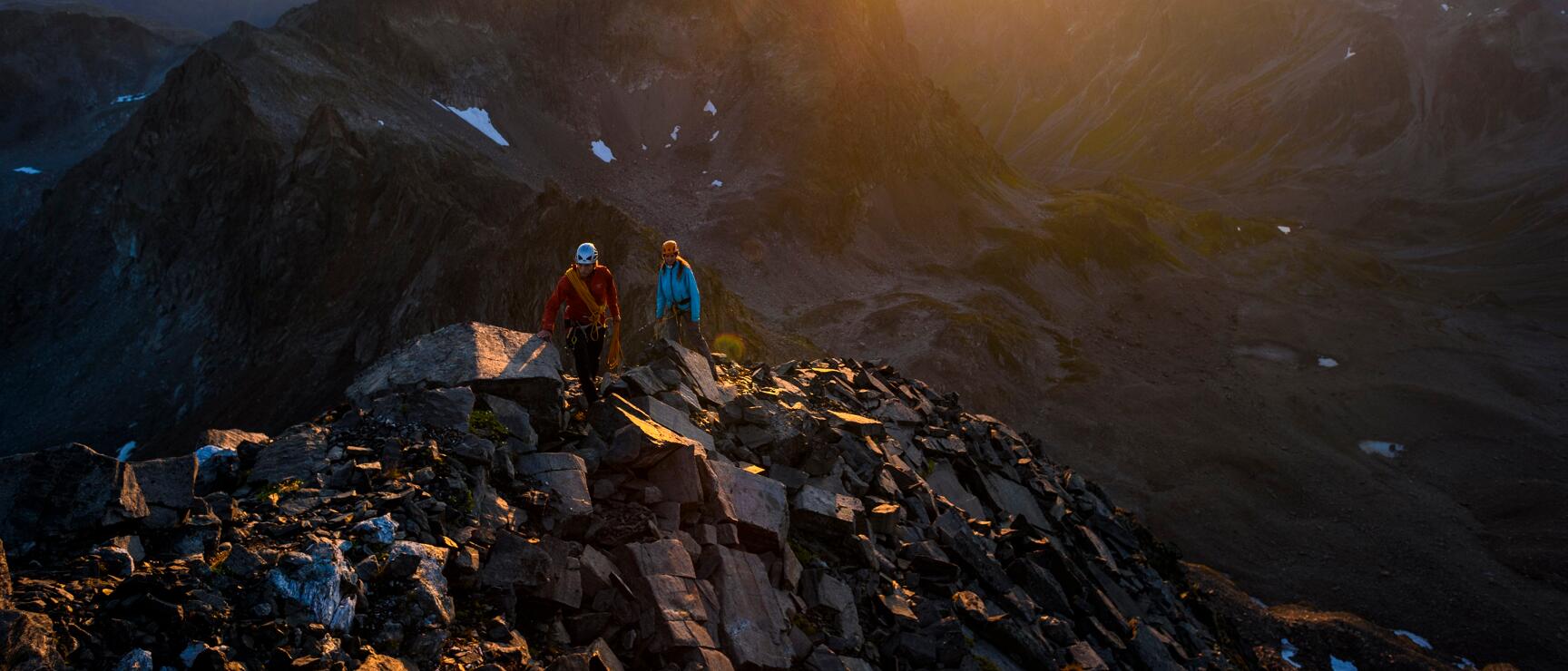
Climbing in Austria
Outdoor experiences in a picture-perfect scenery with breathtaking views, that's how we know and love our holidays in Austria. Crave an adrenaline rush as a bonus? Say no more. Whether you find that special something on a via ferrata at lofty heights or a high ropes course with the whole family - Austria's variety of venturesome climbing experiences has got you covered.
If you are looking for an adventure in alpine terrain without much climbing experience, a well-secured via ferrata is the perfect choice. You don't need to be a professional climber to master via ferratas up to difficulty level C or D. "An introductory course and some practice is all you need", that's what die-hard via ferrata climbers say.
Via Ferrata "Gauablickhöhle"
On the way to the summit of the Sulzfluh in the Vorarlberg Montafon, the well-known mixture of anticipation and excitement arises. A final check, a few warm-up exercises before the carabiner clicks into the guide and off we go, higher and higher. Like a labyrinth, the path winds its way through the 350 meters of cold darkness, before the daylight flashes in from the cave exit and a magnificent view of the surrounding mountains awaits. Once you reach the top, you know you have accomplished something amazing.
Valley location: parking lot in Latschau (1,044 m) or mountain station of the Golmer cable car
Difficulty: 3,5/C
Height of the entrance: 2.170 m
Altitude difference of the via ferrata: 260 m
Length of the cave: 350 m
Total duration of the ascent on the via ferrata: 1.5 hours
What to pack for your via ferrata adventure
Did you know that Europe's first via ferrata was built on the Dachstein in 1843? The man behind it was geographer Friedrich Simony, who had previously conquered the almost 3,000-metre-high mountain with great difficulties. Back then, iron pegs, hand hooks and a ship's rope were used as climbing aids. Today, this via ferrata is known as an enjoyable, albeit demanding, ascent to the Seethalerhütte.
Austria's most beautiful via ferratas
Safety on a via ferrata
FAQs
The very skilled climber won't take winter as an excuse to stop: In Austria's alpine regions, a series of rock faces await. Waterfalls that tumble down in summer turn into magnificent icefalls in winter. When the ice glows in different shades of blue, turquoise and purple in the sun, its surface begins to soften slightly - ideal conditions to hold carabiners. Equipped with ice axes and crampons, ice climbers eagerly look forward to these days to conquer the mirror-smooth walls.